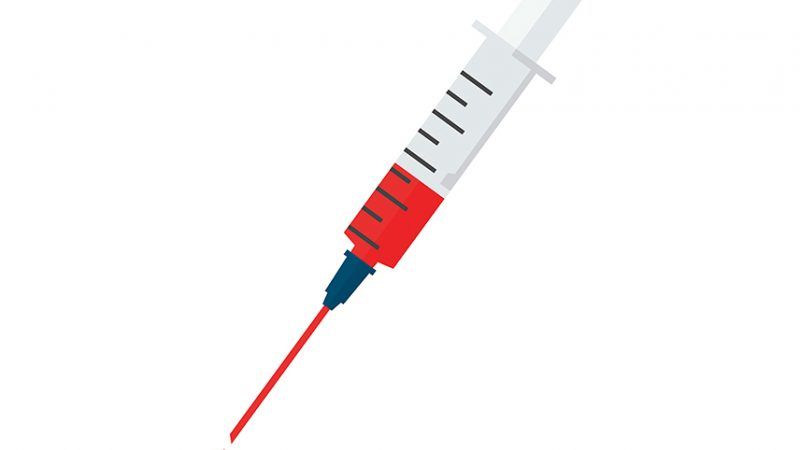The Lives We Can Save in California
Safe injection facilities and other harm reduction measures are the answer.


If San Francisco attempts to move forward with establishing supervised injection facilities (SIFs), places where those addicted to drugs can safely shoot up, it will have to do so without the state government's blessing. In early October, Democratic Gov. Jerry Brown vetoed A.B. 186, a bill that would have authorized the city and county to create such facilities.
The sites, found in urban areas around the world but not yet in the United States, allow users to get high under the supervision of people who could help them in the event of an overdose. They also generally offer treatment options and access to social workers. In short, SIFs prioritize harm reduction over deterrence, and a 2014 report looking at 75 different studies found that the sites are successful in reducing the frequency of overdoses without leading to increases in drug use or crime.
San Francisco has an intravenous drug problem of epic proportions. Citizens have been posting videos on social media of users injecting drugs openly in transit stations; according to BuzzFeed, annual complaints about needles and medical waste on public streets jumped from 290 to more than 6,000 over the course of a decade. Civic leaders there had planned to open two SIFs in July, with private funders willing to foot the cost, but concerns remained that the sites' workers—many of them health-care professionals—could be arrested for violating California laws that prohibit knowingly providing a room or building for the storage or use of drugs. Brown's veto makes such prosecutions more likely.
The ostensible reason for rejecting the bill is that California can't protect such a facility from the federal government. Deputy Attorney General Rod Rosenstein recently warned in a New York Times op-ed that the U.S. Department of Justice would sabotage any attempt to open a SIF anywhere in the country. In his veto letter, Brown said it would be "irresponsible" for him to expose local officials and health-care providers to potential federal prosecution.
That's a smokescreen, however. Brown's embrace of science in areas like climate change and renewable energy does not extend to the research on drug use. "Residential, outpatient and case management—all are needed, voluntarily undertaken or coercively imposed by our courts," he wrote. "Enabling illegal and destructive drug use will never work. The community must have the authority and the laws to require compassionate but effective and mandatory treatment. AB 186 is all carrot and no stick."
America's decadeslong drug war shows that the stick does not work, and—barring the kind of brutal state-sanctioned violence committed against drug offenders in Southeast Asia—it never will. Besides, the point of SIFs is to make drug use less deadly, not less prevalent. The sites save lives by preventing overdoses and save money by reducing the costly emergency services that are part and parcel of enforcement and treatment.
This article originally appeared in print under the headline "The Lives We Can Save in California."


Show Comments (245)